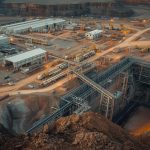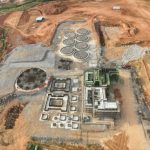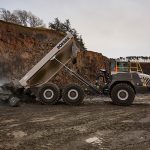In an industry racing to cut emissions, Capital Limited and Epiroc are ahead of the curve. Together, they’ve accelerated the development of a battery-electric surface drill – the SmartROC D65 BE – well before the market was demanding it. Their collaboration shows how a shared vision, bold decision-making, and a willingness to step into uncharted territory can overcome both technical and logistical hurdles.
Tony Woolfe, General Manager of Assets and Supply Chain at Capital Limited, and Carl Lager, Key Account Manager at Epiroc, explain how the partnership took shape and why it’s setting a new pace for mining’s low-emission transition.
The Spark for Collaboration
Tony Woolfe: “We’ve relied on Epiroc equipment for years and knew electrification was inevitable. Instead of waiting, we asked, ‘What’s on your roadmap? What’s next – and how can we help make it happen?’ That’s what set this project in motion.”
Carl Lager: “Capital didn’t wait for a finished product – they wanted to be part of the development. That urgency and involvement changed everything.”
Both companies shared the same motivation: sustainability. “Epiroc wasn’t just talking about electric rigs,” says Woolfe, “they were committed to making real change.”
Biggest Hurdles
CL: “Battery technology was the main challenge. A drill this size can’t run on today’s batteries alone – it would need constant charging. That means a stable power grid, which many mines simply don’t have.”
TW: “There was skepticism – from questions about power supply to doubts about speeding up the timeline. Even inside Epiroc, some thought it couldn’t be done this quickly.”
The Charging Dilemma
Initially, they considered connecting to Sukari Mine’s solar farm. “It wasn’t practical to build a grid just for one test machine,” says Woolfe. Instead, they opted to prove the rig’s capabilities first, even if it meant using a diesel generator during trials.
CL: “We looked at alternative fuels, but none matched the needed power or cost-effectiveness. A plug-in electric rig was the right step – we can switch to green power as infrastructure catches up.”
Why It Moved So Fast
Rather than designing from scratch, they retrofitted the trusted SmartROC D65. “That meant we could focus on the power pack and deliver a working prototype quickly,” explains Lager.
Woolfe adds: “We weren’t passive customers. We got involved early, tested ideas, and solved operational issues together.”
A New Way of Working
From visiting Epiroc’s facilities in Sweden and Canada to shaping design decisions mid-build, Capital Limited brought hands-on collaboration to a new level. “That face-to-face work sped things up beyond expectations,” says Lager.
Woolfe agrees: “People joke that I’m ‘all Epiroc’ – and it’s true. We trust the equipment, the people, and the vision.”
Where It’s Heading
Final testing is underway in British Columbia before the rig heads to Sukari Mine in Egypt – chosen for its skilled technical team, strong client relationship with AngloGold Ashanti, and large on-site solar farm.
Beyond One Machine
TW: “This isn’t about a single drill. It’s about building the roadmap for battery-electric technology across our operations.”
CL: “By 2030, Epiroc aims to offer a full range of emission-free surface equipment. Partnerships like this are how we get there.”
Woolfe sums it up: “Yes, it’s costly – the first electric infrastructure quotes were in the millions. But getting in early gives us a long-term edge. We didn’t just say, ‘Build it and we’ll buy it.’ We said, ‘Let’s build the future together.’ This project will prove battery-electric rigs work in the real world – and that’s the first step toward full adoption.”















